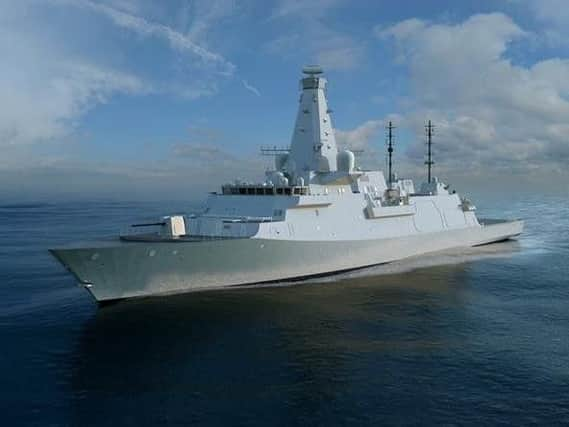Bring back HMS Sheffield, says The Star


The Ministry of Defence is weighing up a campaign led by the Lord Mayor of Sheffield, Coun Anne Murphy, who has written to the First Sea Lord, Admiral Sir Philip Jones, asking for one of the Royal Navy's next generation of Type 23 frigates to be named after the city - reviving the strong tradition of the ship nicknamed the 'Shiny Sheff'.
Coun Murphy has the support of Penistone & Stocksbridge MP Angela Smith, as well as Andrew Coombe, Her Majesty's Lord Lieutenant of South Yorkshire.
Advertisement
Hide AdAdvertisement
Hide AdThe last HMS Sheffield was decommissioned and sold in 2002, while its predecessor was sunk in the Falklands war 35 years ago, killing 20.
The MoD has already confirmed it is to name the frigates after UK cities, raising hopes that Sheffield could be among the places chosen.
“The name of HMS Sheffield is synonymous with the Royal Navy with the first ship to bear the name gaining many battle honours during the Second World War, including helping to sink the German battleships Bismarck and Scharnhorst,” Ms Smith said.
“Of course the second HMS Sheffield was tragically lost in the Falklands and the city has not had a ship named after it for 15 years.
Advertisement
Hide AdAdvertisement
Hide Ad“Now, given that a new city class of frigates are to be built it is vital the city which has always had close ties with the Royal Navy has a new ship named after it and that is why I have added my name to the growing chorus for there to be a fourth HMS Sheffield.”
Construction recently began on the first of eight new Type 23 frigates, a fleet of submarine-hunters being built to protect the Royal Navy’s aircraft carriers and its Trident nuclear deterrent.
Two of the new ships have already been named after Glasgow and Belfast, but Sheffield is among several other cities understood to be vying for the remaining six.
The first HMS Sheffield, nicknamed the Shiny Sheff because of the amount of stainless steel adorning her body, became one of the navy’s most decorated ships, amassing 12 battle honours during the Second World War. The second was hit by an Argentinian Exocet missile during the Falklands war, killing 20 people, and later sank. The last ship to bear the name was sold to Chile 15 years ago.
Advertisement
Hide AdAdvertisement
Hide AdIn her letter to Admiral Sir Philip Jones, First Sea Lord and Chief of Naval Staff, Sheffield's Lord Mayor Coun Anne Murphy said bringing back the title would 'continue and build on the city's strong tradition with the Royal Navy'.
"Although we are, perhaps, one of Britain's most inland cities, the people of Sheffield have taken the ships, their crew and their exploits to their hearts. The name of Sheffield is associated with quality, strength and integrity across the world, and we humbly request that our name should once again be shared with a ship of the Royal Navy."
Andrew Coombe, Her Majesty's Lord Lieutenant of South Yorkshire, said it was a 'great regret' the city was no longer associated with any of the navy's fleet. He has also written to Admiral Sir Philip, asking for the 'strong established link' to be reinstated.
Speaking in a Commons debate, Ms Smith called on defence secretary Michael Fallon to ensure ‘full consideration’ is given to the naming of a fourth HMS Sheffield.
Advertisement
Hide AdAdvertisement
Hide AdDefence minister Harriet Baldwin, responding on his behalf, praised the ‘poignant appeal’ and said she was sure Ms Smith’s representations would have been heard by the relevant committee.
“I am pleased we are building so many new ships in this country that we can have all these new names,” she added.
A spokesman for the Ministry of Defence said a number of cities with links with shipbuilding had expressing an interest in having a new ship bearing their name, and an announcement would be made ‘in due course’.
The Government placed a £3.7 billion order in June for the first three of the new frigates, with the contract for the second batch due to be negotiated in the early 2020s.
The first of the warships, which will have a range of 7,000 nautical miles and be able to travel in excess of 26 knots, is expected to begin service around the middle of the next decade.